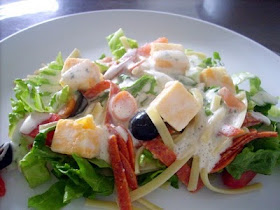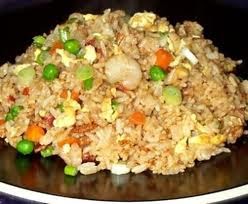June 1998: Finding Money for Food Storage from Food Storage and Provident Living
"Food storage, what a joke," a mother of a large family once said to me. "It's hard enough buying groceries; how do you get far enough ahead to buy food storage?"
This mother expressed a common concern: finding money for food storage. There's no one easy solution, but there are many ways to approach the problem. This newsletter offers some ideas on finding money for food storage.
Shop the Sales
It sounds basic. But shopping sales aggressively can often double your buying power. If you do it systematically over time, you can get a lot of food storage out of your regular grocery budget. Here's how it works.
Always scan the grocery stores' sale flyers. (In our area, these come with the newspaper on Sundays and Tuesdays.) Note the prices for things you know your family uses. When there's a good sale (30-50% or more off the usual price), buy up. If the item stores well -- such as canned goods, frozen goods, pasta, rice, other grains -- buy a 3-month, 6-month, or year's supply, depending on how good the sale is and what your budget allows. If money's really tight, just buy two instead of one (if the item's 50% off, you can do this without spending any "extra" money). If the item is perishable (fresh fruits and vegetables, dairy products), buy as much as you think your family can use. (Plan meals around these items so you can use them up in time.)It takes only about 15 minutes a week to scan the flyers and make notes. After two or three months, you will have a very good feel for prices; you'll know right away if something is a good deal or not. Using this method, you can almost always buy groceries and household items for 1/3 to 1/2 off the usual price. Buying in bulk when there is a good sale automatically ensures that you have a good supply of food storage for family staples you'd have to buy sooner or later anyway. You might as well buy in bulk at the best price, and make fewer trips to the store.
Buy and Use Basic Food Storage
Basic food storage items, such as whole grains and cereals, are among the cheapest and most nutritious foods there are. If you're having trouble finding money for food storage, one effective solution is to buy some basic food storage and begin using it.The savings can be dramatic. For example, a 50-lb bag of oatmeal that costs $17 yields approximately 400 servings (1 serving = 1/2 C dry oatmeal, or approx 2 oz). That's about 4.2 cents a serving. In contrast, 400 servings of a dry cereal that costs 30 cents a serving would cost $120. If you eat the oatmeal instead of the dry cereal, you'll save $103 -- enough to buy 6 more bags of oatmeal!As another example, whole wheat bread made from scratch costs approximately 25 cents a loaf. Buying an equivalent loaf costs anywhere from $2 on up. If your family eats ten loaves of bread a week, baking bread instead of buying it would save at least $17.50. That's enough to buy about 75 pounds of wheat. 75 pounds of wheat will make many, many loaves of bread, freeing up even more money for food storage.Admittedly, using basic food storage foods takes some work. If all of this sounds too overwhelming, just pick one food that fits into your lifestyle and that you know your family will eat. Even if you start out small, you'll begin realizing savings immediately.
Have a Cheap Meal Once a Week
Certain foods make very inexpensive meals. If the budget's tight, one approach to finding money for food storage is to dedicate one night a week to a budget meal, and put the money you save towards food storage. Here are some ideas.
Potatoes. In our area, you can buy a 10-lb bag of potatoes on sale for 79 cents. What can you make out of potatoes? Baked potatoes with toppings; potato soup; scalloped potatoes; potato wedges with cheese; mashed potatoes; hash browns, and more. A 10-lb bag of potatoes will make approximately 20 average servings, putting the cost of a serving at about 4 cents for the potato part of the entree.
Beans. Beans are about the cheapest food there is. If you use dried instead of canned beans, the cost is lower still -- literally pennies a pound. What do you make with beans? Baked beans, bean soup, refried beans, chili, 3-bean salad, beans and rice, and the list goes on. If you serve your family baked beans and a green salad for supper, the cost to feed a family of 6-8 can be as little as $2; the cost of the beans alone would be about 2 cents a serving.
Bread. A loaf of good whole-wheat bread accompanied by a salad or vegetables feeds about four. At 25 cents a loaf, that's just over 4 cents a serving for the bread. Other bread-based entrees include things like sandwiches, home-made pizza, calzones, scones, muffins, pancakes, and waffles. With a green salad or a
vegetable, any one of these could make an inexpensive meal.
Pasta. Pasta can be the basis of many inexpensive meals -- spaghetti, manicotti, stuffed shells, macaroni and cheese, cold pasta salads, etc. Pasta is also a good item to include in your food storage, one that may be more familiar and appetizing to your family than things like bulgur wheat.
Eggs. Eggs are usually under $1 a dozen, and sometimes as cheap as 33 cents a dozen. Inexpensive meals made out of eggs include things like scrambled eggs, omelettes, deviled eggs, and egg-drop soup.
Go Vegetarian Once in Awhile
Meats and poultry are among the most expensive items in the average family's budget. In fact, it's estimated that the average American family spends 25% of its food dollar on meat. The cheapest meat I know is hamburger on sale for 80 cents a pound; on average, meat costs at least $2 a pound, and it can be much higher. In contrast, whole grains and vegetables cost literally pennies per serving. Cutting back on the meat in your diet can free up grocery money for food storage.
Have a Family Fast
Latter-day Saints fast once a month and give offerings to relieve others' hunger. What about fasting occasionally now to prevent our own potential hunger later? What about having a family fast every month or every other month, and dedicating the money saved to food storage?
Cut Back on Eating Out
Eating out is great for entertainment, but it's a very expensive way to obtain food. If the food storage budget is tight, but there's money for eating out, consider cutting back on eating out. For example, instead of buying a bag of fries for 79 cents, buy ten pounds of potatoes and make the fries at home: ten pounds of potatoes will make about 20 servings of french fries for your 79 cents, instead of just one serving. Instead of buying a burger for $1.50, buy a pound and a half of hamburger on sale and grill the burgers at home: you'll get six burgers instead of one.
Don't Always Shop at the Grocery Store
The grocery store isn't always the best place to buy food. In any given community, there are typically many alternative sources of food. Some are cheaper than the grocery store, some are not. A quick look through the yellow pages may turn up sources such as the following: wholesale outlets, discount stores, grain mills, dairies, egg factories, food co-ops, and farmers' markets. All of these can be evaluated to see how they might fit into your food buying and free up money for food storage.
Work for Food
There are ways to get food that involve more work than money. For example, I know of some women who clean at a local grocery store in exchange for the store's leftover produce. A friend once received bushels of free fruit in exchange for cleaning up fruit that had fallen on someone's lawn. Gardening can provide a great deal of low-cost food. In our area, the Lindon cannery provides a wonderful source of low-cost food in exchange for work.
Try It!
Every family is different. What works for one might not work for another. The important thing is to try different ideas, find what works for you, and stick with it. You'll be amazed at how little things add up.
 When there's no groceries in the house this is my go to recipe, because I usually have these items in the pantry. I love that it uses tuna so there's no meat to cook. You can add different veggies to it if you want, but for my picky eater I leave them out and it's still good.
When there's no groceries in the house this is my go to recipe, because I usually have these items in the pantry. I love that it uses tuna so there's no meat to cook. You can add different veggies to it if you want, but for my picky eater I leave them out and it's still good. 
































